Distributed tracing is essential for managing the complexity of modern microservices. It provides visibility into how requests flow through interconnected systems, helping to identify bottlenecks, errors, and latency issues. As microservices adoption grows - 61% of enterprises already use them - tools like OpenTelemetry, Dynatrace, and DreamFactory are shaping the future of observability. Each offers unique solutions for monitoring and troubleshooting distributed systems.
Key Takeaways:
OpenTelemetry: Open-source, vendor-neutral, and highly customizable for telemetry data collection. Ideal for teams seeking flexibility but requires manual setup.
Dynatrace: AI-powered, automated monitoring with enterprise-scale capabilities. Best for organizations prioritizing ease of use and advanced analytics, though it comes with higher costs.
DreamFactory: Focused on API management with built-in security and automation. Useful for handling API sprawl but not a standalone tracing solution.
Quick Comparison:
|
Tool |
Strengths |
Weaknesses |
|---|---|---|
|
OpenTelemetry |
Free, open-source, vendor-neutral; supports diverse stacks; highly scalable. |
Requires manual setup; limited built-in analysis; relies on third-party tools. |
|
Dynatrace |
AI-driven insights; automatic discovery; handles enterprise-scale systems with low overhead. |
Subscription-based; higher costs; less flexible for backend tool customization. |
|
DreamFactory |
Simplifies API creation and management; strong security features; supports various connectors. |
Limited tracing capabilities; lacks AI-based analysis; needs integration with other observability tools. |
Why It Matters:
With microservices projected to dominate software architectures, distributed tracing is no longer optional. Whether you prioritize cost, automation, or API management, choosing the right tool can reduce downtime, improve performance, and simplify troubleshooting in increasingly complex systems.
"Understanding Microservices with Distributed Tracing" by Lita Cho
1. OpenTelemetry
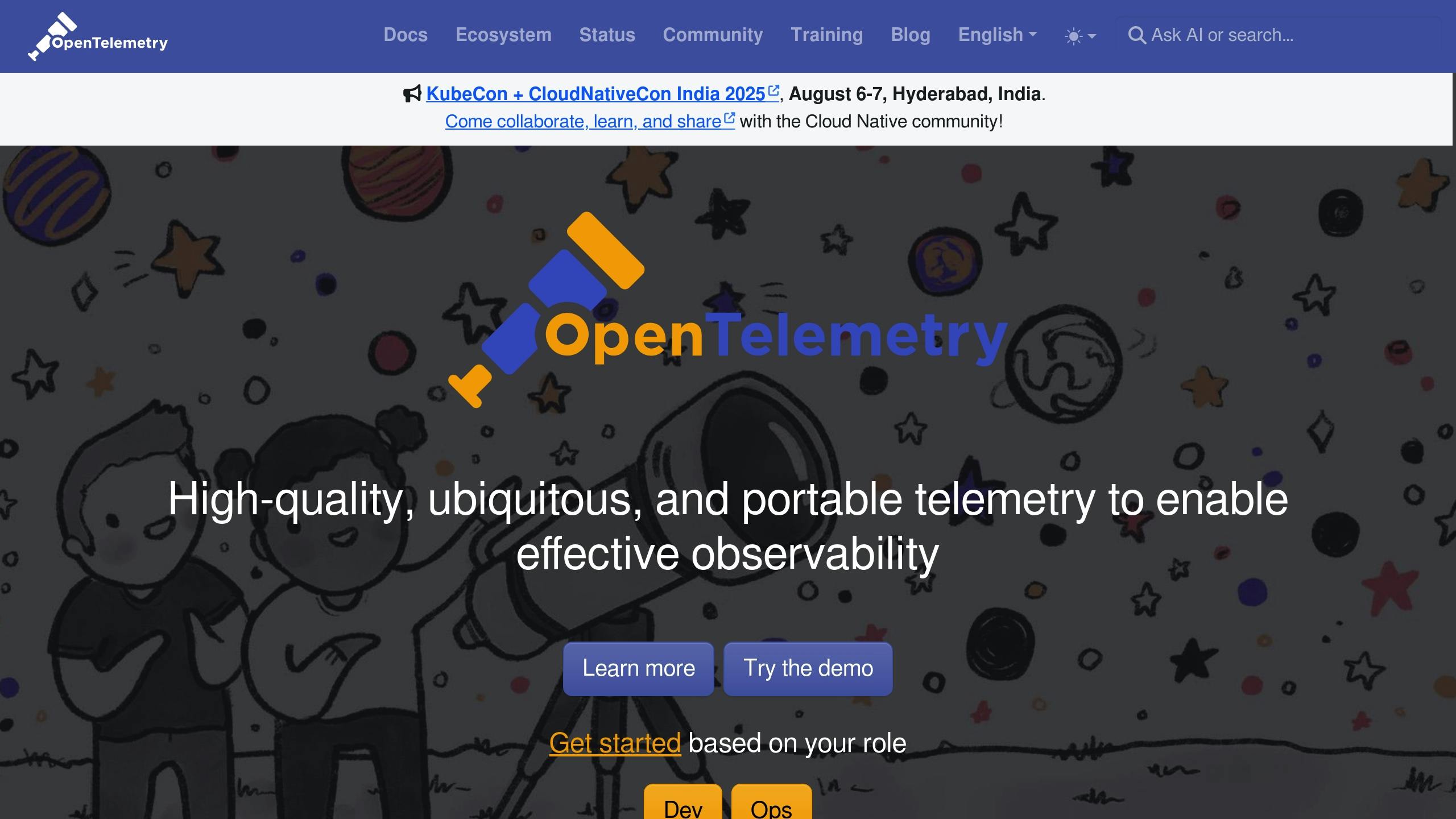
OpenTelemetry is a game-changer for distributed tracing, providing a vendor-neutral standard that has reshaped how organizations approach microservices observability. As the second largest CNCF project after Kubernetes, it offers a unified framework to collect, process, and export telemetry data - spanning traces, metrics, and logs - making it an essential tool for scalable data management and system instrumentation.
Its popularity is hard to ignore. A staggering 79% of organizations either use or are considering OpenTelemetry, largely because it eliminates vendor lock-in and provides a comprehensive view of system performance.
Instrumentation and Trace Collection
At the heart of OpenTelemetry's functionality is its focus on spans and traces. These components work together to map the entire journey of a request across services. Traces capture the full request path, while spans break it down into key operations like authentication, database queries, or API interactions.
OpenTelemetry supports both manual and automatic instrumentation through its extensive libraries and frameworks. Its efficient context propagation ensures spans are linked seamlessly into complete traces, all while keeping overhead low.
For example, Google Cloud leverages OpenTelemetry to simplify observability and streamline troubleshooting efforts.
Integration with Microservices Environments
OpenTelemetry’s vendor-neutral design makes it an ideal fit for microservices, offering a unified way to collect data through its OpenTelemetry Collector. This collector integrates effortlessly with a wide range of popular libraries and frameworks, ensuring smooth adoption.
"By 2025, OpenTelemetry will be firmly established as the industry standard, with major companies across industries - airlines, banks and other businesses - utilizing OpenTelemetry and adopting it widely." – Morgan McLean, senior director of product management at Splunk
Its ability to deliver end-to-end transaction visibility is a standout feature. With AI-driven optimizations, OpenTelemetry can enhance routing efficiency and resource allocation, ultimately improving system reliability. Designed to handle complex microservices environments, it scales effortlessly to meet high traffic demands.
Scalability and Data Management
OpenTelemetry is built with scalability in mind, offering flexible deployment options that cater to various organizational needs. The OpenTelemetry Collector can function as an agent on individual nodes or as a centralized gateway. For environments with high telemetry volumes, horizontal scaling is achieved by deploying multiple Collector instances behind load balancers. To maintain data integrity, stateful components rely on consistent hashing.
Data management is another area where OpenTelemetry excels. Features like buffering and caching improve throughput and minimize data loss, while tail-based sampling ensures that critical traces are retained for analysis, even as volumes grow.
To fine-tune performance, monitoring metrics such as otelcol_processor_refused_spans and otelcol_exporter_queue_size is key. Additionally, cloud platforms and Kubernetes can dynamically scale resources based on demand. For further customization, the Collector Contrib repository provides extensions that allow for batching and other performance tweaks.
2. Dynatrace
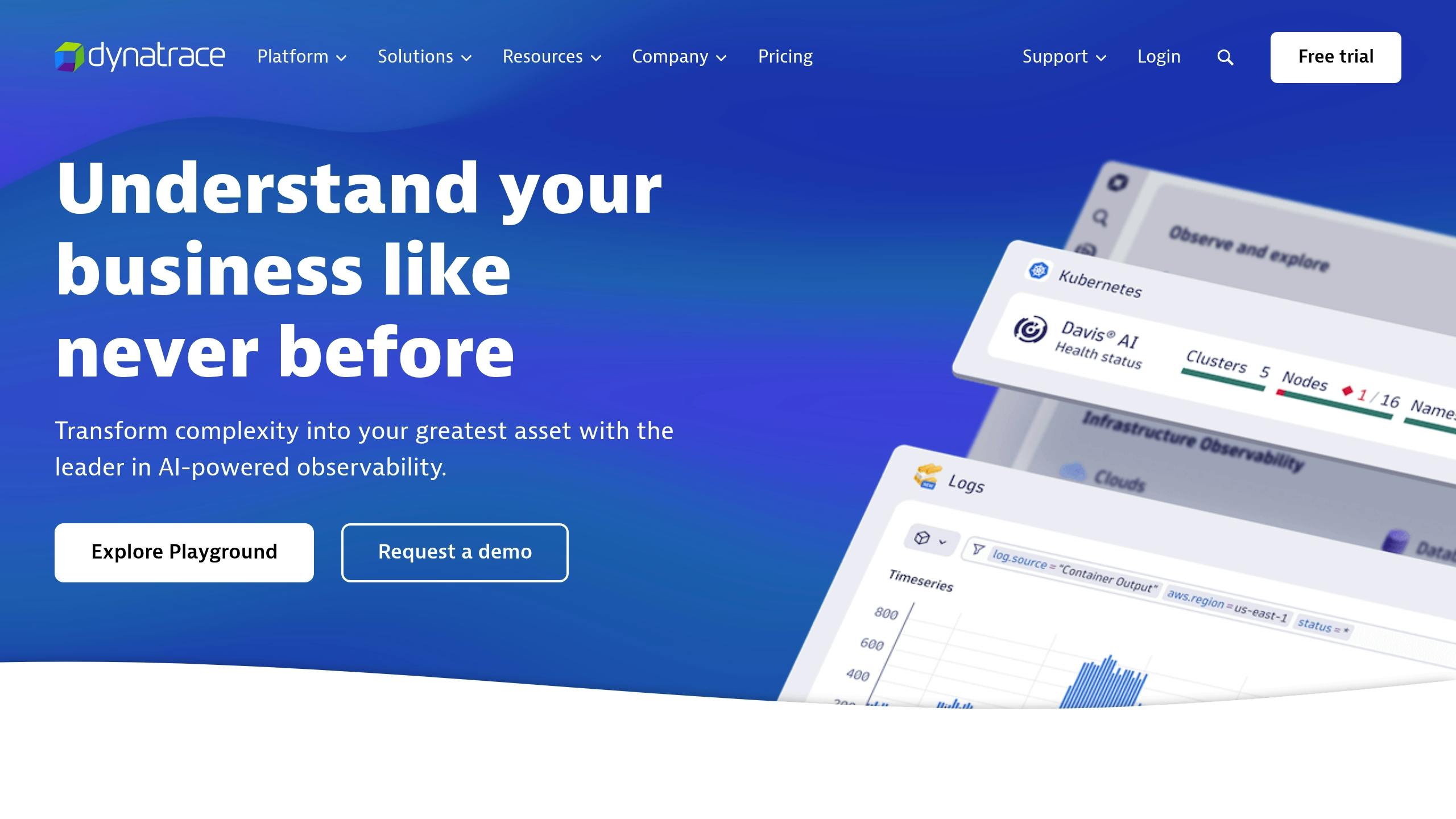
Dynatrace, much like OpenTelemetry, is transforming distributed tracing by combining automation with real-time analytics. Its AI-driven approach simplifies the complexities of monitoring microservices while delivering actionable insights.
Instrumentation and Trace Collection
At the heart of Dynatrace's instrumentation is its patented PurePath® technology. This goes beyond traditional distributed tracing by merging trace data with user experience metrics, logs, topology details, and code-level profiling. Using OneAgent for Java, Dynatrace automatically gathers OpenTracing span data and integrates it into PurePath® traces. The platform also extends this automatic discovery to dynamic environments like serverless and containerized instances.
What sets Dynatrace apart is its ability to provide real-time visibility into user interactions. By tracking unique identifiers across microservices, containers, and infrastructure, it can trace a single request through hundreds of system components. This delivers immediate insights into system health. Dynatrace also collaborates with OpenTelemetry to expand observability, collecting detailed trace data such as request status, response times, version details, and infrastructure metrics.
Building on its trace collection capabilities, the platform uses AI to automate insights and streamline remediation efforts.
AI and Automation Features
The Davis AI engine is a standout feature of Dynatrace, automatically identifying root causes in complex microservices environments. Working alongside the AutomationEngine, Davis AI enables automated workflows based on trace data analysis. Its predictive capabilities also analyze trace patterns to address potential issues before they impact users. A particularly useful feature is its ability to baseline errors and slowdowns automatically, filtering out false positives and ensuring teams focus on real performance challenges.
"Dynatrace's automatic discovery and instrumentation for AWS Lambda and Kubernetes have also been invaluable and fulfilled all of their most essential requirements."
- Alex Hibbitt, Engineering Director, SRE & Fulfillment, Photobox
The AutomationEngine further enhances workflows across multicloud ecosystems using causal AI. Additionally, teams can create custom metrics from trace data with Dynatrace OpenPipeline, integrating seamlessly with advanced tools like AutomationEngine and SRE Guardian.
Scalability and Data Management
Dynatrace is designed to meet enterprise-scale demands with impressive scalability. The platform can support up to 50,000 hosts per cluster while maintaining optimal performance. Its Software Intelligence Platform has been enhanced with a scale-out cloud-native architecture, tailored for large enterprises. The Grail data lakehouse is another key component, enabling high-performance analytics on vast volumes of observability, security, and business data. This architecture allows Dynatrace to handle petabytes of trace data, making it ideal for enterprise-scale monitoring and troubleshooting.
When it comes to data processing, Dynatrace can manage up to one million messages per second, ensuring responsiveness in high-traffic environments. The OpenPipeline feature further enables the ingestion, processing, and contextualization of data from virtually any source at scale.
For example, SAP CX relies on Dynatrace to manage over 1,000 Kubernetes clusters and 3,500 environments worldwide, using multiple Dynatrace clusters.
"As we expand our digital footprint, our enterprise cloud environment is continually growing more dynamic and complex. We have multiple Dynatrace clusters around the globe to manage more than 1,000 Kubernetes clusters and 3,500 individual environments across private and public clouds", said Reinhard Weber, Senior Product Manager, SAP CX. "Dynatrace scales perfectly and provides a unique combination of observability with automation and intelligence, making it easy to get precise answers about anomalies affecting user experience, application performance and cloud infrastructure to deliver the optimal business outcomes across our global organization."
Dynatrace also includes the Smartscape feature, which dynamically maps relationships between applications and infrastructure. This mapping updates in real time as microservices evolve, ensuring teams always have an accurate view of their systems.
3. DreamFactory
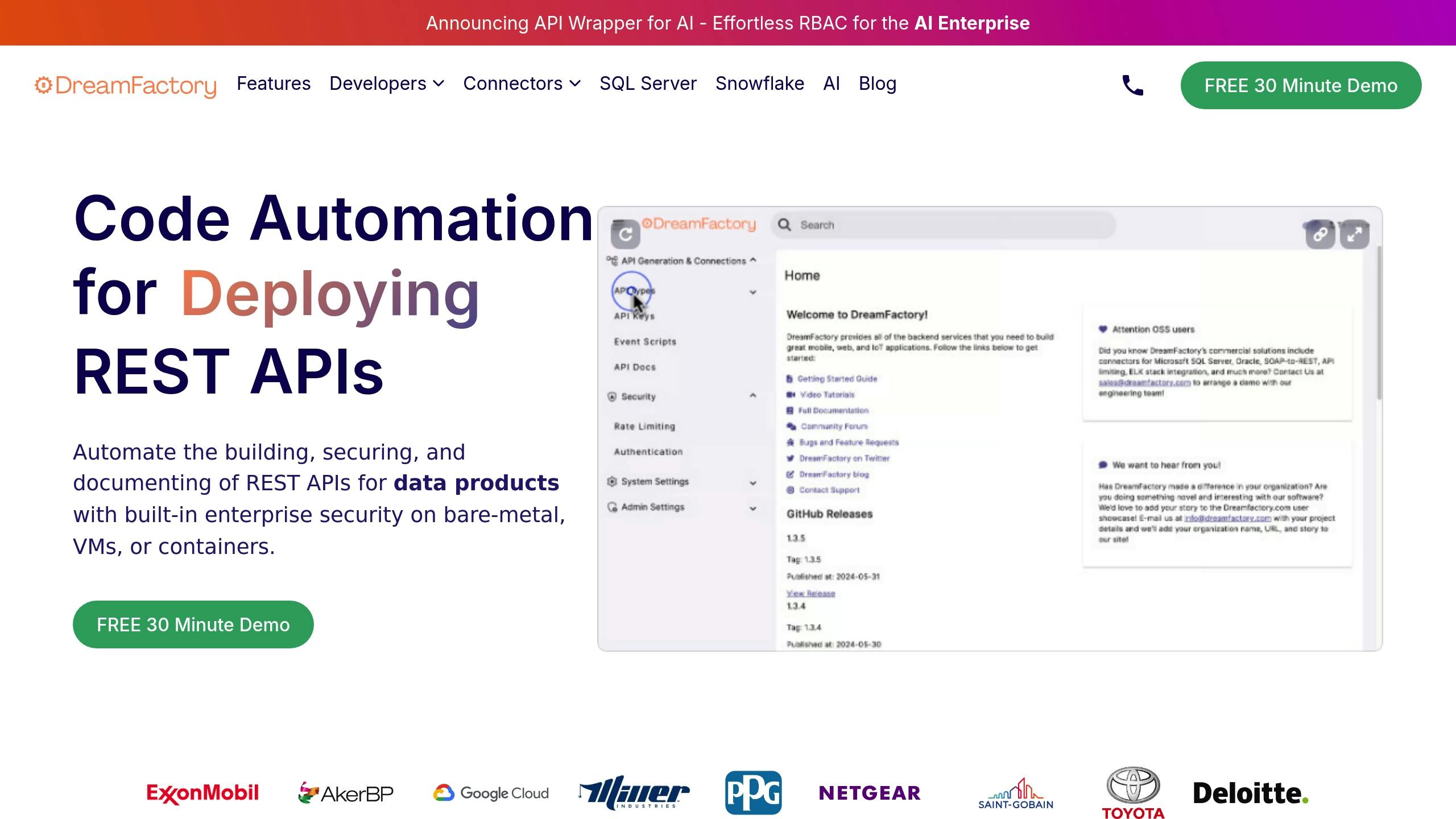
DreamFactory steps into the distributed tracing space with an API-focused approach that incorporates advanced automation, security, and scalability. Known for its automated API generation, the platform enhances observability in microservices by seamlessly integrating trace collection and management. With its robust tools, DreamFactory simplifies the complexities of distributed tracing while maintaining high standards for security and performance.
Integration with Microservices Environments
One of the biggest challenges in distributed tracing is achieving smooth integration across diverse microservices architectures. DreamFactory tackles this with a no-code interface that simplifies API creation. By automating secure API development, it removes the usual hurdles of connecting different services for tracing. The platform supports over 20 connectors, including Snowflake, SQL Server, and MongoDB, enabling unified tracing pipelines across entire tech stacks. This capability ensures consistent and efficient trace collection, even in complex environments.
AI and Automation Features
DreamFactory leverages automation to boost tracing efficiency. Beyond just generating APIs, the platform automates security configurations to comply with regulations like GDPR and HIPAA. For example, a U.S.-based energy company used DreamFactory to create REST APIs for Snowflake, cutting development time by 85% while maintaining regulatory compliance. This kind of automation not only accelerates the setup of tracing endpoints but also allows teams to focus on analyzing trace data rather than building the infrastructure.
Scalability and Data Management
DreamFactory’s architecture is built to scale, making it ideal for environments with thousands of microservices generating continuous streams of trace data. Its ability to handle unlimited API creation ensures it can meet the demands of even the most data-intensive operations.
The platform’s security features play a critical role in safeguarding sensitive trace data:
|
Security Feature |
Function |
Benefit |
|---|---|---|
|
Role-Based Access Control |
Manages database and HTTP method access |
Ensures precise permission settings |
|
Assigns unique keys for application access |
Strengthens authentication |
|
|
JWT Implementation |
Secures session management |
Provides modern token-based security |
|
Validates and deconstructs queries |
Enhances database safety |
DreamFactory also offers deployment flexibility, supporting Kubernetes, Docker, and Linux environments. This adaptability ensures smooth integration with container orchestration platforms, making it a solid choice for managing APIs in modern distributed tracing setups. Whether dealing with small-scale projects or large, complex systems, DreamFactory provides consistent and reliable API management across various infrastructures.
Strengths and Weaknesses
When evaluating distributed tracing solutions for microservices, understanding the trade-offs is key to selecting the right platform.
|
Solution |
Strengths |
Weaknesses |
|---|---|---|
|
OpenTelemetry |
• Flexible, vendor-neutral approach for backend tools |
• Requires manual setup and integration |
|
Dynatrace |
• Automatic discovery with OneAgent technology |
• Proprietary pricing model with subscription costs |
|
DreamFactory |
• Automated API generation with robust API management features |
• Not a dedicated distributed tracing tool |
The table above outlines the main features and limitations of these solutions. Below, we dive into the specific contexts where each might shine.
Choosing the Right Solution
The best choice depends on your organization's priorities. OpenTelemetry is a strong contender for teams prioritizing flexibility and vendor independence. Its open-source nature and lack of licensing fees make it attractive for budget-conscious organizations willing to handle manual configuration and setup. However, its reliance on third-party tools for advanced analysis and its more complex implementation process may require additional resources.
On the other hand, Dynatrace stands out in enterprise settings where ease of use and comprehensive observability are critical. Its AI-powered insights and automatic discovery features reduce operational overhead, making it a favorite for teams that can justify its higher subscription costs. While it offers minimal setup effort, its proprietary nature and potential vendor lock-in could be drawbacks for some.
DreamFactory, though not a dedicated tracing tool, excels in API management. Its automated API generation and built-in security features are ideal for organizations focused on managing APIs across rapidly growing microservices. However, for full-scale distributed tracing, it may need to be paired with specialized monitoring tools to provide the necessary observability.
Key Trade-Offs
OpenTelemetry: Best for teams looking for a cost-effective, customizable solution but prepared for manual setup and third-party tool integration.
Dynatrace: Suited for enterprises seeking a seamless, all-in-one solution with advanced analytics, despite the premium pricing.
DreamFactory: Ideal for API management in dynamic microservices environments, though not a standalone tracing solution.
Ultimately, the decision comes down to balancing configuration complexity, cost, and scalability needs. OpenTelemetry's open-source model appeals to teams on tight budgets, while Dynatrace's premium features often deliver faster returns in enterprise environments. DreamFactory provides a middle ground for API automation but requires complementary tools for full observability. For organizations managing complex microservices architectures, understanding these trade-offs is essential to achieving operational efficiency.
Conclusion
Distributed tracing for microservices is advancing quickly, driven by the growing adoption of cloud-native architectures. With 85% of companies now relying on microservices as their preferred architecture, the demand for effective observability tools has become more pressing than ever.
Our analysis highlights three key approaches: OpenTelemetry, Dynatrace, and DreamFactory, each offering distinct advantages.
OpenTelemetry stands out for its flexibility and vendor-neutral design. Backed by major players like AWS, Google Cloud, and Azure, it’s shaping up as a cornerstone for future observability strategies. However, its versatility often comes with added complexity and a steeper learning curve.
Dynatrace caters to enterprises seeking automation and AI-driven insights. Its ability to cut system downtime by up to 50% and its automated discovery features make it ideal for organizations that prioritize operational efficiency over cost. While it’s a premium option, the lower operational overhead and faster issue resolution can justify the investment.
DreamFactory focuses on simplifying API management within microservices architectures. With over 20 connectors, built-in RBAC, API key management, and OAuth capabilities, it’s a solid choice for handling the API sprawl that often accompanies distributed systems.
Looking to the future, advancements like eBPF technology and metric-based observability are redefining how distributed tracing is implemented. eBPF is transforming automatic instrumentation, offering deeper insights into databases and Kubernetes environments. Meanwhile, generating metrics directly from distributed traces is helping to streamline observability processes.
"Organizations have realized that nearly 70% of collected observability data is unnecessary, leading to inflated costs", says Laduram Vishnoi, founder and CEO of Middleware.io.
This underscores the growing importance of contextual observability - shifting from simply collecting data to extracting actionable insights. AI and machine learning are also playing a critical role by enabling predictive analytics that can foresee system failures before they happen.
When choosing a distributed tracing approach, organizations must weigh their technical capabilities and budget constraints. OpenTelemetry is well-suited for teams with strong technical expertise and limited budgets, while Dynatrace offers a more comprehensive solution for enterprises willing to invest in automation. DreamFactory, on the other hand, is a strong contender for organizations managing complex API ecosystems, especially when paired with additional tracing tools.
Ultimately, the success of distributed tracing lies in its ability to deliver measurable results, such as a 72% increase in deployment speed and a 50% reduction in downtime. By investing in the right observability tools today, organizations can position themselves to take full advantage of future innovations in this rapidly evolving space.
FAQs
What are the benefits of OpenTelemetry's vendor-neutral design for managing microservices?
OpenTelemetry’s vendor-neutral design gives businesses the freedom to manage their microservices without being tied to a single provider. This means companies can easily connect with different monitoring platforms, allowing them to pick the tools that align best with their specific requirements.
On top of that, OpenTelemetry introduces a standardized way to collect telemetry data, which is a game-changer for keeping an eye on and tracing complex microservices setups. This uniformity not only makes observability more straightforward but also improves troubleshooting and helps systems scale as they become more sophisticated.
What are the benefits of using AI-powered features in Dynatrace for distributed tracing?
Dynatrace uses AI-powered tools to make distributed tracing easier by automatically pinpointing the root causes of issues. This helps teams address problems faster and with less effort. The platform also leverages predictive analytics to foresee potential disruptions and sends proactive alerts to keep operations running smoothly.
On top of that, AI-based anomaly detection reduces the need for manual monitoring. By identifying unusual patterns automatically, it allows teams to focus on more pressing tasks while boosting system reliability and overall performance.
How does DreamFactory improve observability in microservices architectures?
DreamFactory makes it easier to keep an eye on your microservices by offering tools that let you monitor and manage API interactions effectively. With features like detailed tracking of data flows, customizable performance dashboards, and integration with popular monitoring tools, it provides a clear view of how your system is performing.
These tools not only help you fine-tune system performance but also enhance security and boost reliability. They make it simpler to spot and fix issues across your microservices architecture, keeping everything running smoothly.
Kevin McGahey is an accomplished solutions engineer and product lead with expertise in API generation, microservices, and legacy system modernization, as demonstrated by his successful track record of facilitating the modernization of legacy databases for numerous public sector organizations.




















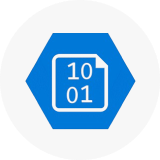
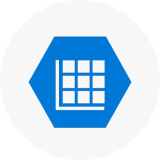


 Blog
Blog


